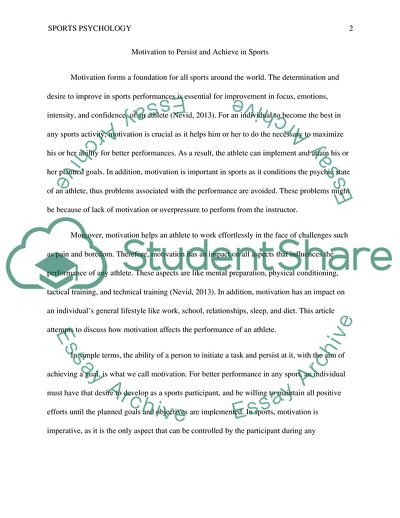Cite this document
(Motivation to Persist and Achieve in Sports Coursework Example | Topics and Well Written Essays - 1500 words - 1, n.d.)
Motivation to Persist and Achieve in Sports Coursework Example | Topics and Well Written Essays - 1500 words - 1. https://studentshare.org/psychology/1841799-sports-psychology
Motivation to Persist and Achieve in Sports Coursework Example | Topics and Well Written Essays - 1500 words - 1. https://studentshare.org/psychology/1841799-sports-psychology
(Motivation to Persist and Achieve in Sports Coursework Example | Topics and Well Written Essays - 1500 Words - 1)
Motivation to Persist and Achieve in Sports Coursework Example | Topics and Well Written Essays - 1500 Words - 1. https://studentshare.org/psychology/1841799-sports-psychology.
Motivation to Persist and Achieve in Sports Coursework Example | Topics and Well Written Essays - 1500 Words - 1. https://studentshare.org/psychology/1841799-sports-psychology.
“Motivation to Persist and Achieve in Sports Coursework Example | Topics and Well Written Essays - 1500 Words - 1”. https://studentshare.org/psychology/1841799-sports-psychology.


